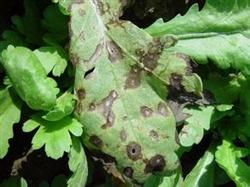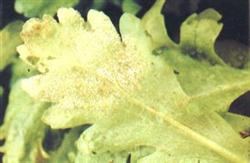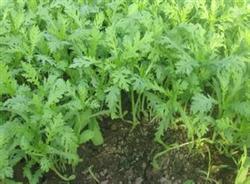Artemisia annua L. and its cultivation techniques in greenhouse

Chrysanthemum belongs to semi-cold-resistant vegetables, like cold and humid climate, growth temperature is 18-20℃, growth is poor above 29℃, growth is slow below 12℃, can tolerate short time. Low temperatures around 0 ° C. The light requirements are not strict, more resistant to weak light, is a long-day crops. If the temperature can be controlled, it can be planted in the greenhouse. Select land. The height of the stem can reach 20-30 cm during the vegetative growth period, so it can be planted in the south low part of the greenhouse where high-seedling crops (such as kidney beans, tank beans, etc.) are planted. Select the species. Chrysanthemum has two kinds of big leaf varieties and small leaf varieties, and small leaf varieties are mainly used in greenhouse cultivation. Small leaf varieties are more cold-resistant, with a growth period of 40-50 days. Cultivation techniques. Cultivation of chrysanthemum requires that the soil be kept moist frequently. In order to separate from the planting beds of high-seedling crops, the beds for planting chrysanthemum should be made into independent flat beds for watering. In order to promote emergence, seed soaking and germination can be carried out, and wet method for strip planting or broadcast. After sowing, cover with soil 1 cm, tightly cover with plastic film. Usually 4-5 kg per mu. After emergence, remove all plastic films, keep the ridge surface dry and wet for 1-2 true leaves, thin seedlings and pull out weeds, and keep the seedling spacing about 4 cm. Pay attention to regular observation of humidity in the shed, so as to avoid excessive moisture, resulting in the occurrence of diseases of high-seedling crops in the shed. During the growth period, quick-acting nitrogen fertilizer is applied for 1-2 times with water. When the plant reaches about 20 cm, harvest is started, not too late, so as not to affect the quality. After the first cut, water and topdressing are applied to promote the occurrence of lateral branches, and harvest is carried out after 20-30 days. The topdressing amount per mu is 10 kg urea each time.
- Prev

Cultivation and pest control techniques of Artemisia annua L.
First, field identification: Artemisia downy mildew can occur from seedling stage to adult stage. At the initial stage, the chlorotic macula with inconspicuous edge was produced on the leaves, the back of the disease spot was densely white to yellowish white mildew layer, and the diseased leaves withered rapidly. With the development of the disease, the adaxial surface of the diseased leaves is also densely white to yellowish white mildew layer. When it's serious.
- Next

Cultivation techniques and Management methods of Artemisia annua L.
1. Artemisia annua L. should be cultivated in sandy loam soil, which requires convenient irrigation conditions. After selecting the land, turn the soil and apply fine farm manure, applying more than 1000 kg per 0.1ha and 25 kg diammonium phosphate as base fertilizer. Make a flat bed with a width of 1.2 to 1.4 meters and a length of 10 to 20 meters, ready to sow seeds. Second, sowing and raising seedlings.
Related
- Where is it suitable to grow horseradish in China? it is expected to see the middle altitude horseradish in Alishan.
- How to prevent tomato virus disease reasonably? (Control methods included)
- Many people like to plant towel gourd on the balcony. What are the main points of this method and management?
- What crops can chili peppers be mixed with?
- Fertilization techniques and matters needing attention in Tomato
- What are the grafting techniques for peach seedlings in spring?
- Harm and control methods of root swelling disease of Chinese cabbage
- What are the pests of sweet potatoes? How to prevent and cure it?
- Symptoms, causes and Control methods of navel Rot in Tomato
- The cause of "Cucumber rotten bibcock" in Farmers' planting Cucumber and its Control Plan

